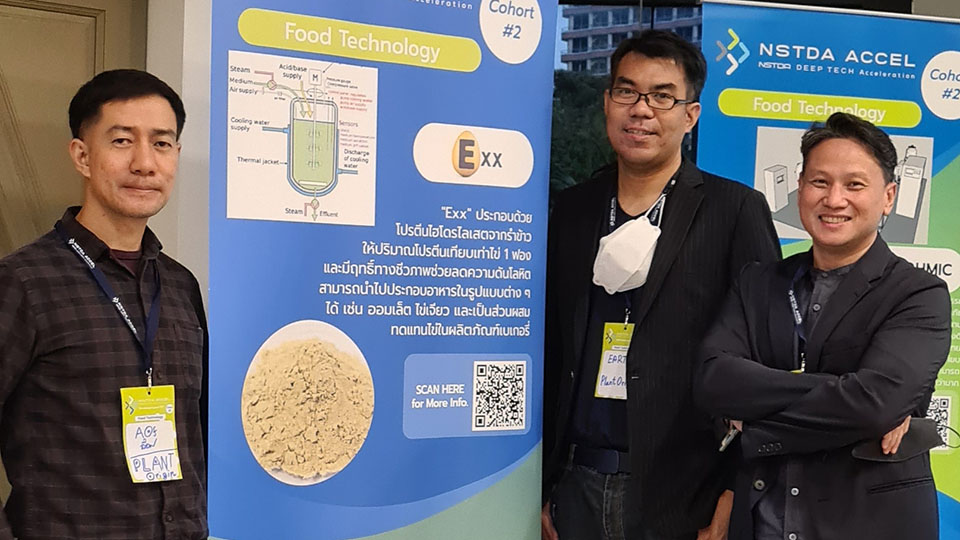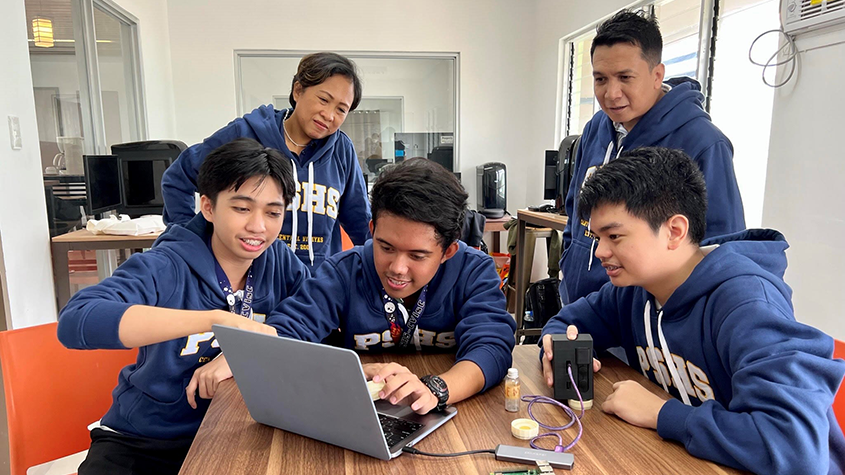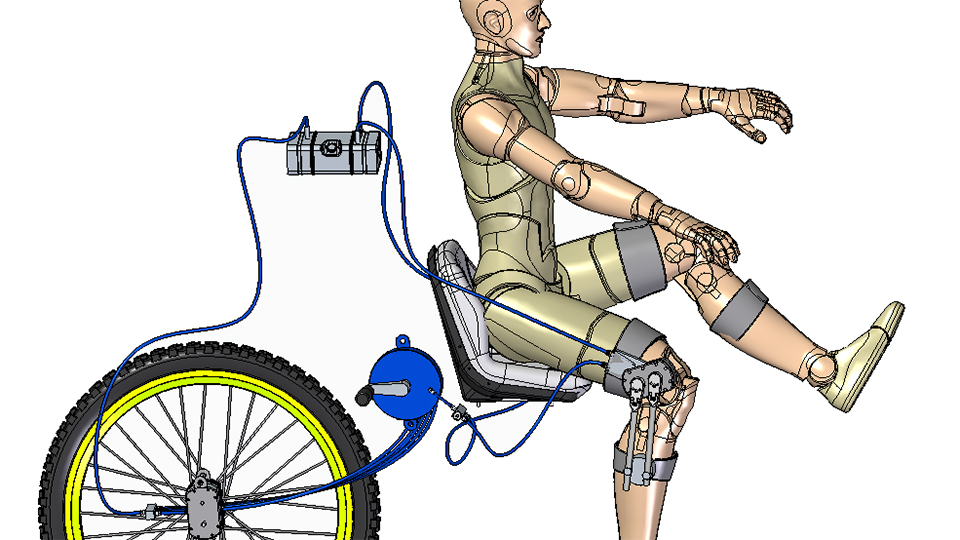Jinha Lee, ROK/USA
The way humans interact with the physical world has been changing since time immemorial. With the advent of 2 dimensional (2D) computers in the mid-20th century, that interaction entered a virtual space. A divide existed, however, between the 2D world of computers and the intuitive 3D space that humans and other beings inhabit.
Scientists from around the world, including Korean-born research student and entrepreneur Jinha Lee, have been developing novel ideas, methods and products that are bridging that gap. Mr. Lee’s creations include a levitating magnetic ball that can be manipulated by hand and a transparent 3D desktop computer.
In 2012, moreover, the scientist co-founded a company – Eone Timepieces Inc. (Eone), based in Boston, Massachusetts, the United States of America (USA). Via Eone, Mr. Lee has been able to develop some of his ideas, including a tactile watch that can be used by a visually impaired person.

As of 2013, Mr. Lee had not only invented and developed designs and products that were shaping new frontiers in human/computer interaction; the researcher had also become a winner of multiple awards. At the same time, the entrepreneurial scientist had laid the foundations for a successful business and academic future.
Invention
One of Mr. Lee’s earliest inventions, a levitating magnetic ball known as ZeroN, was created as a result of attempts to overcome a long-standing challenge for engineers: how to facilitate 3D interactions between atoms (physical reality including beings and objects) and bits (the basic units of information in computing).
For decades, mechanical and computational devices were created that permitted restricted inputs in 2D – which allowed, for instance, text to be written. Progress was achieved when desktop computers that permit images to be displayed on a screen and manipulated in dynamic ways (by pulling or pushing it with a keyboard or mouse) were created – referred to as graphical user interfaces (GUIs).
The advent of 3D computing, which allowed users to manipulate virtual computerized creations as though they were real-world objects, was a major improvement. These advances, however, did not fully bridge the gap between the user and the computer because they were largely based on 2D input.
Furthermore, in cases were 3D virtual reality headsets or computer-controlled gloves were used, the user was still tethered by an electrical or optical cord to a computer or power source.
By overcoming tethered connections and 2D inputs while realizing a 3D world where users could directly and freely manipulate material objects with their hands or via computational instructions, a new era of interaction between humans (or atoms) and computers (or bits) was reached. Indeed, an entirely new field of research – known as haptic science, the study of feedback technology based on the touch, forces and motions of a user – resulted.

ZeroN, which was co-developed at the Massachusetts Institute of Technology’s (MIT) Tangible Media Group (between 2009 and 2011), part of the university’s Media Laboratory (MIT Media Lab), is a 3.17 centimeters (cm) in diameter magnetic steel ball that floats in space above a work platform. Above this platform, a user can directly manipulate the ball by hand.
The computer-controlled electromagnetic space (where the strengths of the magnets are varied to provide better control of the steel ball), is part of a feedback loop including an array of infra-red cameras (which sense and monitor a user’s hand movements relative to the magnetic ball) that ensures ZeroN’s revolutionary 3D interaction with humans and computers.
ZeroN, in effect, accomplishes three things simultaneously: it allows a user to place a magnetic ball in a real-world platform or space (a magnetic field of 38cm, by 28cm, by 9cm volume); permits the user to manipulate the ball by hand (moving it in any direction) within that space; and, allows for computer-controlled motion of the object. As a result, the ZeroN ball seemingly defies gravity.
The invention, moreover, has a number of additional benefits. When encased within a plastic shell, the ball permits various kinds of information to be superimposed or projected onto it (such as a digital image of the earth) which can then be viewed or shared with others.
ZeroN has various possible applications including in education (where the movement of bodies such as planets can be modeled); in interactive games and entertainment (acting as a floating light source or camera); and in business (for product development and marketing or for displaying 3D architectural models that can be viewed from multiple angles). The invention’s possible applications appear to be endless.
With ZeroN, physical reality has become programmable; the bits and atoms that existed in separate domains can now coexist in 3D space; and, new vistas of human gestural interaction with computers – sometimes called a gesture-controlled user interface – can be explored.
As Mr. Lee noted, “There is something fundamental behind motivations to liberate physical matter from gravity [while enabling] control. The motivation has existed as a shared dream amongst humans for millennia. I have aspired to create a space where we can experience a glimpse of this future.”
Research and development and partnerships
Educated in Japan, the Republic of Korea (ROK) and the USA, Mr. Lee has benefited from a wide range of professional supervision and research and development (R&D) facilities including those at MIT Media Lab – where renowned Professor Hiroshi Ishii was his supervisor. In addition to developing ZeroN, the scientist, who was at the time (2011) a graduate student at MIT, worked as a Microsoft Research Intern in the Applied Sciences Group of Microsoft Corporation (Microsoft), a multinational software developer based in the state of Washington, the USA.
As an intern at Microsoft, Mr. Lee utilized his experiences from MIT Media Lab (where he had worked on 3D modeling and scientific visualization) to help develop prototypes of a transparent 3D computer. Known as the See Through 3D Desktop, the device is outfitted with a special gesture interface (SGI) – a transparent monitor with a 3D projection that allows users to gesture with their hands, instead of using a mouse or track pad, in order to access computer files or icons.
Although the SGI computer has a traditional keyboard (as of 2013), it utilizes a transparent monitor behind which a virtual 3D space – sometimes called a digital filing cabinet or volumetric display environment – has been created. A user can reach into this space with their hands in order to operate a variety of virtual features such as desktop files, documents and icons.
“Our 3D desktop computer,” Mr. Lee explained, “allows the user to interact with a virtual desktop; depth cameras detect [a] user’s fingers and capture the hand position, so the user can switch back and forth from 2D and 3D interactions really easily. [A user, moreover] can reach up [with the hand] to reach the display windows and arrange them in this space […]”
The transparent technology developed for the See Through 3D Desktop has many potential applications – apart from being used as a desktop computer. Microwave oven screens, for instance, can use the technology to display instructions for cooking. Freezer doors in supermarkets, moreover, can show important information to customers, such as the price or nutritional content of products.

In addition to partnering with MIT Media Lab and Microsoft, Mr. Lee has developed some of his ideas in collaboration with colleagues at Eone – some of whom where members of MIT’s network of researchers. Indeed, while helping to co-develop the company, the entrepreneurial scientist utilized his training in engineering to develop Eone’s early prototypes – including a watch called The Bradley that can be used by visually impaired people.
Named after Bradley Snyder, an American former serviceman and Olympian who lost his eyesight, The Bradley has one ball bearing sitting on its outer circle; embedded in a groove along the circumference, the bearing represents the “minute hand” of a clock. Another ball bearing, embedded in an inner circle and located on the watch’s face, signifies an “hour hand”.
Depending on the relative position of the bearings (the outer ball moves fast compared to inner one), both non-visually impaired and visually impaired users can tell the time; the former via sight and the latter by using the tips of fingers to feel the positions of the bearings.
In 2012, R&D trials and proof of concept testing on a number of visually and non-visually impaired users showed that The Bradley is a competitive solution for time keeping compared to rival products – including traditional analogue watches or those that rely on an automated voice message to inform (visually impaired) users of the time.
A potential customer who is visually impaired said, “…with a talking watch, I find that it interferes with privacy; for a lot of other [visually impaired] people [moreover], it can be a challenge to use an analogue watch, where you need to open and feel the [clock] hands…” In contrast to using talking watches or traditional analogue ones, both visually able and visually impaired people can tell time in a discrete way when using The Bradley.
As of 2013, the potentially revolutionary timepiece (which had a titanium face with a matte finish and straps in four color schemes and three materials – leather, fabric and metal mesh) was being prepared for commercialization via Online pre-orders at Eone’s website.
In the same year, Mr. Lee’s role in the company had evolved from product engineer to a consultant. The entrepreneur was, moreover, on sabbatical leave from MIT in order to work as a researcher in the Visual Display Division of Samsung Electronics (Samsung), a multinational conglomerate based in Seoul, ROK.
Branding and commercialization
Mr. Lee has relied on traditional academic avenues (such as peer reviewed publications and university conferences) and industry-based commercialization and branding events in order to promote his ideas and open new opportunities for monetization.

The scientist, for instance, co-presented a paper on the ZeroN device at the 25th annual symposium on user interface technology (2011), which is a conference convened by the Association for Computing Machinery, an organization for industry professionals based in New York City, the state of New York, USA.
During the “Future of Touch and Interactivity” (2012) conference, a gathering of industry experts, Mr. Lee was the only student invited to give a presentation (on markets for interactive displays and remote sensing technologies).
In addition to engaging peers and speaking to industry, the entrepreneur has utilized the international media in order to present his designs and ideas. To this end, Mr. Lee has been interviewed (especially for the ZeroN device and the 3D Desktop Computer) via established media such as Cable News Network, the British Broadcasting Corporation and Engadget, a renowned technology blog.
In order to commercialize The Bradley, moreover, Mr. Lee and his colleagues at Eone have benefited from industry advice and access to investors via organizations such as MassChallenge Inc. (MC), a business incubator based in Boston, Massachusetts, USA.
As one of only 89 MC Finalists (a showcase for start-ups in 2012), Eone’s members were able to meet and share ideas with other entrepreneurs and potential investment partners including Fidelity Management and Research LLC, an multinational financial services organization based in the USA.
In addition to seeking financing from traditional avenues, Eone has raised funds via crowd-sourcing mechanisms such as Kickstarter – an American-based firm which provides crowd-funding services that support entrepreneurs who need to raise capital for specific projects.
Thus, with products and brands under development or ready for production, and with a strong reputation as an entrepreneur that is gaining recognition and support, as of 2013 the young scientist was taking active steps to secure his academic and financial future.
Patents
Mr. Lee is keenly aware of the benefits that can accrue from protecting inventions, brands and products – such as attracting investors and ensuring avenues of future development.To this end, the scientist and entrepreneur and his partners and colleagues have relied on the intellectual property (IP) system.
In 2010, Mr. Lee and his colleagues at MIT Media Lab made a formal patent application for a “Collapsible Input Device for a 3D Direct Manipulation” via the United States Patent and Trademark Office (USPTO).
The entrepreneur and his co-inventors, moreover, applied for a patent for “liquid crystal display and driving method thereof” (2007 and 2012) also via the USPTO.
Furthermore, provisional patent applications were filed for a “3D Interactive magnetic levitation system for mid-air tangible interaction” (2012) by the scientist and his co-inventors at MIT Lab and Microsoft via the USPTO. In the same year, a formal patent application was filed by Mr. Lee and colleagues for a “Transparent Display Device,” also via the USPTO.

In addition, the scientist and his supervisor at MIT, Professor Ishii, applied for a patent for a Collapsible Input Device (2013) with the USPTO, which was granted in February 2014. With an array of IP protected assets around the world, Mr. Lee and his colleagues have prepared the ground for a fruitful collaboration.
Business results
From the ROK via Japan and the USA, Jinha Lee’s groundbreaking research, inventions, ideas and products have been turning heads in the world of computing, design and engineering. In the process, the scientist-entrepreneur is not only meeting with financial success while laying the foundations for a successful future; he is also winning multiple awards and gaining peer recognition.
Mr. Lee’s creations were selected as one of the 100 significant innovations (2010) by NetExplorateur, an organization that tracks cutting edge digital technologies from around the world. In the following year, the young entrepreneur received a 5 year Samsung Scholarship, worth US$250,000, in order to complete a Doctor of Philosophy program in the ROK.
Mr. Lee, moreover, was not only fulfilling his sabbatical at Samsung; he was also elected a TED Fellow (2012 /2013) – a program that brings together young entrepreneurs from around the world. Managed by Technology, Entertainment and Design (better known as TED), a non-profit organization based in North America, TED Fellows have an opportunity to engage the organization’s vast network of policy shapers and industry professionals.
With secured IP assets, a co-developed company (in 2013 Eone had secured approximately US$500,000 from over 3,000 crowd-sourced supporters), a growing brands and products portfolio, and a fully financed academic future, Mr. Lee had prepared the ground for a potentially prosperous merging of his academic and commercial interests.
Generation next
Jinha Lee’s rise in the world of academia and entrepreneurship highlights the importance of linking ideas in the lab – via the IP system – with opportunities in the world of business. In so doing, the scientist/entrepreneur has helped advance a new field of science, secured his future and inspired a new generation of research and business pioneers.



